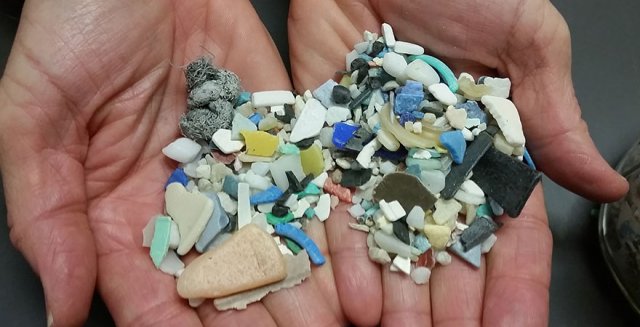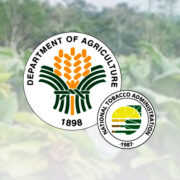Troubling outlook for human health: ‘More microplastics are entering the food chain’

According to reports, 352,479 kilograms of solid waste were removed from coastlines stretching from Ilocos to Socksargen during this year’s annual International Coastal Cleanup (ICC). A remarkable 74,075 committed volunteers participated in the event, which took place on September 21, 2024. Organized by the Department of Environment and Natural Resources (DENR), the initiative aims to raise awareness about the harmful impact of plastic pollution on marine life and ecosystems.
It’s inspiring to witness the ongoing dedication to environmental stewardship through the annual cleanup endeavors, where breaking records in trash volume and volunteer engagement is commendable.
However, while these achievements are notable, the primary objective should be to progressively decrease the waste accumulation on our shorelines over time. Each year, striving towards a reduction in the total waste gathered is a cause for celebration, signifying advancement in our shared mission for sustainability and a healthier marine environment.
On Coastal Cleanup Day, we aim to surpass previous accomplishments by establishing new benchmarks, yet our ultimate victory over plastic litter must be when we can proudly declare that this year’s cleanup yielded the smallest amount of trash, even with a greater number of volunteers involved. This remarkable milestone is a genuine indicator of success, highlighting the impact and efficacy of the awareness efforts advocated by Coastal Cleanups. Once again, the significant presence of plastics in the overall waste collection remains concerning.
The fight against plastic pollution is more critical than ever, especially in light of the disturbing discovery of microplastics in marine organisms and human bodies by eating contaminated seafood or from sources other than food.
While research on the health impacts of plastics is still relatively new, initial findings indicate a concerning outlook for human health as more plastics degrade into microplastics that enter the food chain.
Cosmetics or cleaning supplies
It is worth noting that the majority of plastics come from hydrocarbons, except for newer bio-based plastics (bioplastics) which make up only a small portion of the total plastic production. Most plastics are mainly used in food packaging and various industrial applications like automotive, insulation, appliances, and medical devices.
On September 18, 2024, The Philippine Daily Inquirer released an AFP report titled “Plastics: Navigating the Maze of Dizzying Acronyms.” This report delves into the diverse types of plastics and their role in the increasing accumulation of plastic waste. However, the real issue arises when these materials break down into smaller pieces, either due to bacterial breakdown or mechanical processes triggered by factors such as prolonged UV exposure that makes the plastic brittle, turning them into harmful substances. Moreover, a considerable portion of microplastic pollution can occur during the manufacturing stages, compounding the problem.
Microplastics are small plastic particles less than 5mm in size that originate from the breakdown of larger plastic items or are intentionally manufactured small for use in products like cosmetics or cleaning supplies.
I have outlined the potential health effects of microplastics and their transmission pathways using information from two 2023 review papers authored by Lee and colleagues, entitled “Health Effects of Microplastic Exposures: Current Issues and Perspectives in South Korea,” and Hosny and colleagues, entitled “Microplastic Sources, Formation, Toxicity, and Remediation.” The summary is as follows:
1. Ingesting contaminated food and water can result in the accumulation of microplastics in the gastrointestinal tract, causing inflammation, oxidative stress, and disrupting the gut microbiome.
2. Inhalation of microplastics, particularly fibers, can result in respiratory issues like inflammation and reduced lung function.
3. Microplastics may contain chemicals that can be released into the body when ingested, potentially disturbing hormone functions and causing various negative health impacts.
4. Exposure to microplastics can stimulate immune reactions, leading to heightened inflammation and potential allergic responses.
5. Microplastics have the ability to build up in organisms along the food chain, presenting prolonged health hazards when humans consume contaminated seafood.
Minimizing exposure to microplastics
Overall, the full extent of the health effects of microplastics on humans is still under investigation, and further research is necessary to comprehend the risks associated with either ingesting or inhaling microplastics. It is important to note that a study conducted in 2021 by Rodolfo Romarate II and Dr. Hernando Bacosa of the Mindanao State University-Iligan Institute of Technology detected microplastics in the air of Metro Manila. To minimize exposure to microplastics, individuals can implement measures such as avoiding single-use plastics, opting for natural personal care products, using face masks in areas known for high microplastic pollution, and endorsing sustainable practices aimed at reducing plastic pollution.
Plastic pollution is a significant environmental problem that requires urgent attention and action. In addition to stopping the manufacturing of plastics or minimizing the production of new plastic products by banning single-use plastics, several other solutions can help tackle this issue.
Promoting recycling programs and proper plastic waste disposal is crucial in reducing plastic pollution. Governments can also support regulations on plastic production, use, and disposal to mitigate plastic pollution. Investing in sustainable alternatives like biodegradable plastics may make a significant impact.
As the adoption of bioplastics to combat greenhouse gas emissions and address plastic pollution continues to grow, it is crucial to also reflect on the moral considerations associated with utilizing food resources for plastic manufacturing. Finding a balance between environmental advantages and concerns related to food security and land use is essential in evaluating the sustainability of bioplastics. Exploring seaweed as a potential feedstock may provide valuable insights into its environmental impacts and food security concerns compared to traditional land-based sources, however, I will save this topic for a future column.
Moreover, bioplastics pose challenges related to compatibility and contamination. Due to their lack of compatibility with existing recycling systems, bioplastics can contaminate traditional plastic recycling processes, creating complications and increasing the likelihood of improper disposal. Additionally, the production of bioplastics demands significant energy resources for extraction, conversion, and processing, raising concerns about their overall environmental impact and potential contribution to climate change.
Bioplastics
Contrary to common belief, not all bioplastics are biodegradable. In fact, there are non-biodegradable bioplastics that introduce a myriad of other challenges, as highlighted in a 2021 review by Fredi and Dorigato titled “Recycling of bioplastic waste: A review.“ The authors emphasize that the shift from conventional plastics to bioplastics does not automatically solve resource depletion and plastic waste accumulation issues. Effective waste management strategies are crucial for all bioplastics, regardless of their biodegradability.
While recycling non-biodegradable bioplastics like bio-polyethylene terephthalate (bioPET), bio-polyethylene (bioPE), and bio-polypropylene (bioPP), is essential, the best end-of-life approach for biodegradable bioplastics is less clear. The authors also point out that biodegradation by itself may not be sufficient for recovering plastic materials for reuse, unlike mechanical and chemical recycling, which focuses on waste management and resource conservation. They suggest identifying optimal end-of-life pathways for the most common bioplastics to address both environmental concerns and sustainability goals.
Advancing the use of bioplastics as a practical solution, therefore, necessitates a comprehensive approach that underscores the significance of assessing their environmental, social, and economic impacts. While initiatives like regular waste collections, such as the annual Coastal Cleanup, aid in tackling plastic pollution in the marine environment on a short-term basis, it is imperative to acknowledge our considerable contribution to global plastic waste. This recognition should serve as a driving force to pursue enduring strategies to combat plastic pollution effectively.
Dr. Michael P. Atrigenio is an Assistant Professor at the Marine Science Institute of the University of the Philippines Diliman and the program head of the Professional Masters in Tropical Marine Ecosystems Management Program. He is also the President of the Marine Environment and Resources Foundation.
















